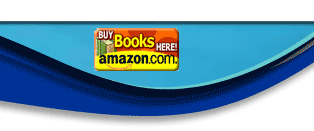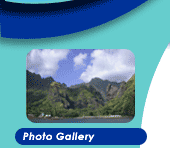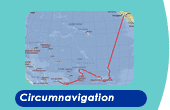August 28, 200218°dm;32'S, 173°dm;54'WStories in this section... Tonga Tongan Time
|
0500: During the night we crossed the international dateline and entered the Kingdom of Tonga. We are now a full day ahead. Seems strange. We are about 4 miles from land, near the Jimmy Cornell (World Cruising Routes) waypoint to the northeast of Tonga's Vava'u Island Group. The island rises as an almost-imperceptible shadow to our port, visible this early because of the almost-full moon. Our first night out on this passage from Niue, we marveled as this moon rose out of the eastern sea promptly at 9:00PM, a squashed orange pumpkin. Now it's a white dented ball suspended in the night sky at the top of our mast. My senses are on full alert, anticipating landfall. The radar is on. Our automatic tracking system is making navigation easy, compensating for the drift caused by the 16-20 knot northeast wind. Pacific Bliss is gliding gently over the swells, filling a double-reefed main. I am writing this by flashlight, sitting at the port helm, watching for ship's lights. Perhaps there will be other vessels headed slowly for Neiafu, waiting for the first light. The Kingdom of Tonga. The name evokes mystery, a sense of the exotic. Perhaps it is because I have never been here before. Or perhaps it is because this country is one of the few remaining absolute monarchies in the world and I want to understand how that works. Tonga also has the reputation as the only island in the Pacific that was never colonized. This Polynesian country of over 170 islands has especially intrigued me since I viewed the Tongan dancers on the beach on international TV; Tonga was the first country to greet the new Millennium on January 1, 2000. I remember the news coverage later, after 444-pound King Taufa'ahau Tupou IV went on a diet and fitness program and lost over 100 pounds. While I looked forward to the real thing, I researched Tonga using the books I had on board. Yet, I am sure that the books-as usual-only tell part of the story. The legends of the islands tell two stories of its origin: In the first, the mighty Polynesian god Tangaloa went fishing and snagged his tortoise shell and whalebone fish-hook on an opening in the island of Nuapapu, located in the Vava'u Group to which we are heading. The islands emerged as one continuous land mass, but the fishing hook broke, allowing bits of land to sink back into the sea. In the second legend, the demigod Maui was fishing, using a hook borrowed from an old man named Tonga. Maui yanked up the islands one by one and named the entire island group after the man who had made this very productive hook. The origins of Tongan royalty also have their place in the legends. The first Tu'i Tonga (Tongan ruler) was formed from the union of the sun god Tangaloa and a beautiful young earthling named 'Ilaheva. When the god discovered her shell fishing on a small island near Tongatapu-the southernmost island group--he became amorous and nine months later, she gave birth to 'Aho'eitu who was to become a king in a long line of Tu'is. Tongans even date this legendary event to AD950! The title was passed on from father to son or to the title-bearer's brother if there was no direct heir. (I understand that now that one of the problems of the current monarchy-with the King now well into his '80s--is that the crown prince is having much too good of a time to get married and to produce heirs.) The first known European contact was in 1616 when a Dutchman named Jacob Lemaire encountered a Tongan sailing canoe, killing at least one Tongan and taking others captive. He never actually landed in Tonga. The next visitor was another Dutchman, Abel Janzoon Tasman, whose two ships traded with the Tongans in the southern islands in 1643. Then in 1767, English Captain Samuel Wallis explored Tonga. And then, seven years later, peripatetic Captain Cook-one of my favorite explorers--visited Tonga during his second Pacific expedition. I have a selection of his 1768-1779 exploration journals on board Pacific Bliss. Cook said, "…ambition leads me not only farther than any other man has been before me, but as far as I think it is possible for a man to go." No man did more to alter and correct the map of the earth. Captain Cook called Tonga "The Friendly Islands". He had just left "The Savage Islands" of Niue where the legends tell of Cook's three aborted landings there. Cook stopped twice in Tonga. On his first visit in 1773, he visited Eua and Tongatapu. Eager to trade, friendly Tongans swarmed over his ship. They offered him tapa and women in exchange for iron. Cook was born in Scotland; he had his men perform musical numbers on bagpipes. The Tongan women sang and danced. Food and kava were served. Reportedly, Cook was the only one of the Europeans who had the nerve to partake of the kava, the ground root of the pepper plant. (Gunter and I had experience with kava ceremonies during a Cruising World charter to Fiji's Yassawa Island Group; we look forward to the experience of visiting the kava clubs in Tonga-even though the drink tastes like a mud puddle.) Eight months later, Cook was back to Tonga on his return voyage. He traded and took on food and water at Nomuka. Then on his third voyage, he stayed from April through July 1777 on the islands of Tonga, sailing from Nomuka, his first landfall, on to the Ha'apai Group, the middle group of islands in the Kingdom. It was there that he had such a good time being feted one day that he bestowed the name of "The Friendly Islands." However, history has shown that was a misnomer. (We first heard the story from our guide on the "Reef Walk" in Niue, who said that Captain Cook was just being fattened up for the kill. He had gone on to say that officials in Niue want to get rid of their nickname, "The Savage Islands." Officialdom thinks that the name is bad for Niue's image-even though the locals are proud of their ancestor's use of red war paint to scare off Cooks' landing party.) The Ha'apai story was confirmed however, by our research books on board. Indeed, during that very feast, the local chiefs were reportedly plotting his murder. It was apparently during some squabbling over whom would get what that Cook retreated to his ship-and avoided the umu (earth oven). The world first heard this news from Will Mariner. He was just 15 when he arrived in Ha'apai on a British ship Port-au-Prince in 1806. The ship was ransacked and its crew killed. Mariner was taken prisoner by Chief Finau and held there for four years. He later wrote a classic account of pre-Christian life in Tonga called "An Account of the Natives of Tonga Islands." Cook never saw the Vava'u Group. The excellent Moorings guide, "A
Cruising Guide to the Vava'u Island Group in the Kingdom of Tonga,"
provides a good explanation for this: The Vava'u Group is one of the world's great sailing destinations. Both the Moorings and Sunsail companies have operations here. And it is a mecca for cruisers. Yachts on the "Coconut Milk Run" begin their Pacific Crossing from the West Coast of the United States, Mexico or the Galapagos. Then they tend to converge at the Marquesas, depart for the Tuomotus and spread out through the Society Islands. From there, they take one of three alternatives: the northern route, which puts them to the Northern Cooks, the Samoas, and on to Tonga; the middle route (as we took) which leads through the middle-to-western Cooks, e.g. Aitutaki and Palmerston, on to Niue, ending in Tonga; or the southern route (which leads to Rarotonga in the Southern Cooks and over to Tonga, possibly stopping at Beveridge Reef and Niue along the way. Here, they relax and recover in the Port of Refuge, one of the South Pacific's most protected harbors. From there, it's on to Fiji or New Zealand to wait out the hurricane season. We look forward to swapping sea stories in the many bars and restaurants lining the port. 0700: Gunter and Richard are up now. We have just enjoyed the longest, most beautiful sunrise that we have experienced for a long time. The colors changed from pastels, to vibrant oranges and reds against the northeast point of Vava'u Island, eventually flooding over to the wispy mare's tails covering half the sky. Since we left Raiatea in the Societies almost six weeks ago, we have experienced at days and nights of overcast skies or rain at least half the time. This two-day passage has been what South Pacific cruising should be about (and hasn't been so far): following winds in the 10-20 knot range for the most part, moderate swells, with clear skies overhead. Last night, we witnessed a double green flash. "Like an emerald," Gunter exulted. He had never seen one before, and in his skeptical way, had questioned whether my "sightings" have been for real. The sun went down, Green Flash # 1; then waves came up on the horizon, and the sun dipped a second time: Green Flash #2. We can barely contain our enthusiasm as we look forward to the adventure ahead. 1000: We took down the sails, motored through Faihava Pass on the western side of the island, navigated through the long fjord-like entrance to the Port of Refuge, and now we are safely moored at a ball owned by Beluga Diving here. There are more yachts in this harbor than we care to count: chartering boats, cruising boats flying flags from countries all over the world, adventure and diving boats, and live-aboards that look like they haven't moved in years. We are content.
journal85.html
|
|
|
|











